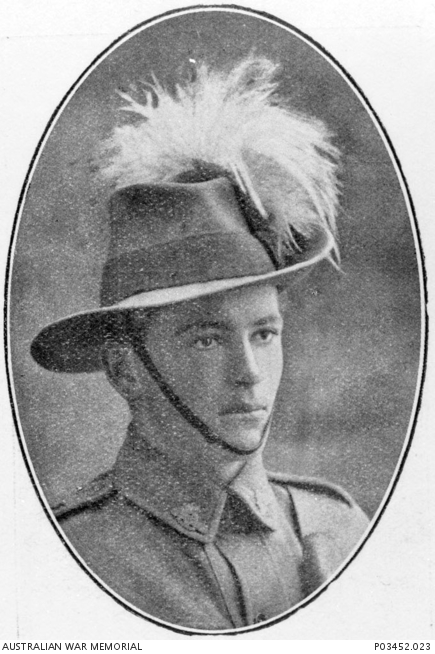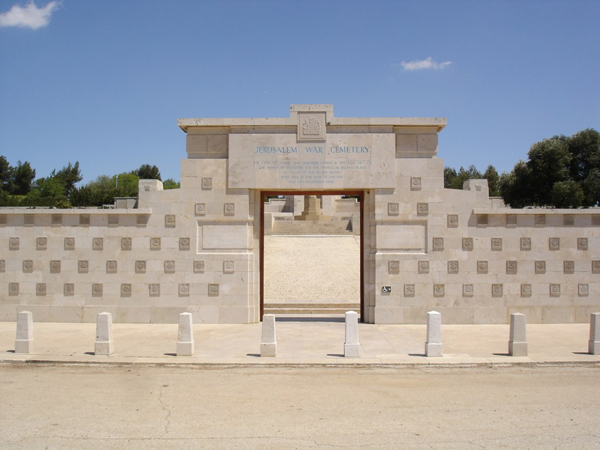The story of Thomas Richard Rutledge should be told in the context of his family’s contribution to the war. Thomas was one of three brothers from Dirranbandi who enlisted together, trained together, sailed together and fought together in Palestine. The brothers had consecutive service numbers as follows: 1343 was the youngest, 18-year-old Henry; 1344 was the eldest, 21-year-old Francis; and 1345 was 19-year-old Thomas.
All three listed their father, Francis Henry Rutledge, of Yamburgan, Dirranbandi, as their NOK, when they enlisted at Yamburgan on 3 May 1915. The brothers had been educated at the Toowoomba Grammar School in the years just prior to the outbreak of war. Their father also used an address at “Carwoola” in Clifford Street, Toowoomba. Thomas was an ideal recruit for the light horse: he was tall and lean, at 5’11” and 135 pounds. Horses had been part of his life as long as he could walk. He had a fair complexion, light brown eyes, brown hair and stated his faith as Church of England.
The initial rush of volunteers who came forward in August and September 1914 had slowed until the AIF landed at Gallipoli on 25 April 1915. Now that the war had become serious there was a new wave of enlistments, over 100,000 in 1915 alone. The Rutledge boys were at the forefront of this new wave. They were posted to the 10th Reinforcements of the 5th Light Horse Regiment and sailed from Brisbane on the 5 October 1915 aboard A69 Warilda. They did not reach Egypt in time for deployment to Gallipoli and so continued training in Egypt. After further training in Egypt Thomas moved out to the front at the Suez Canal. For the next two years the British Army in the Middle East waged a bitter campaign against the Turks and their German allies. The campaign would eventually take them through Sinai and Palestine as they attempted to capture the cities of the Ottoman Empire. The 5th LHR fought through until the Armistice in late 1918. Thomas and his brothers participated in the long, arduous advance.
At Romani in the summer of 1916 Thomas fought in skirmishes near the main battlefront. For much of 1917 he was with the forces besieging Gaza, including three major attacks, until, at the moment the city fell to the British, he was wounded in action with a “GSW, Rt. thigh”. He was evacuated to hospital at Cairo and the convalescent camp at Abbassia. He was away from his unit from 9 November 1917 until 28 February 1918.
In early 1918 the Turks and their German allies formed strongpoints in the Jordan Valley. The British commander General Allenby sent the ANZAC Mounted troops and British infantry to attack them at Es Salt and Amman, the future capital of Jordan. On 19 April Thomas Rutledge was killed in action in one of the many skirmishes that formed this part of the campaign. He was buried where he fell by the Chaplain Thomas Mullins.
After the war Thomas’ grave could not be located. His brother Francis, now long discharged, wrote to the army from the Quilpie district in July 1928; his letter contains some moving detail, still vivid ten years after Thomas’ death: I have your letter of the 7th July with reference to the grave of my brother (Thomas) . . . . My father who your letter is addressed to is deceased. I note what you say re not being able to find my Brothers grave. I was with my brother when he was killed. After the armistice I went to the Registrar of Graves in Jerusalem & told him where my brother was buried & gave him the position of the grave. The grave is across the Jordan River from Jericho & the bearings are as follows 285 degrees from the Mount of Temptation, 53 degrees from Kabr Mejahid, 122 degrees from Kabr Said. Is it possible to inform the Imperial War Graves Commission of the position of my Brother’s grave & get them to make a search? There would be no good news and Thomas’ name is recorded on the Jerusalem Memorial. Brothers Francis and Henry both avoided the bullets, but suffered illness before repatriation.
Toowoomba Grammar School Archive Records State that he started school on 16th July 1907 and left 16th December 1911.
The School Magazine of May 1918 states, RUTLEDGE, T. R. (Dick).-Second son of F. L. Rutledge, of Yamburgan, St. George. Served with 5th Light Horse in Palestine, was wounded. Killed near Jerusalem, April, 1918. The Magazine mentions his name on the Honour Roll with the following poem:
They went where duty clear did call,
They scarcely asked the reason why;
They only knew they could but die,
And death was not the worst of all.
Of man for man the sacrifice,
All that was theirs to give, they gave,
The flowers that blossom from their grave
Shall sow themselves beneath all skies.
Notes from his grand daughter Angela Sheridan given to the school on 25 October 2018 state, ‘Brian and Dick Rutledge waited for younger brother Laurie to come of age and enlisted together at Enoggera Barracks in May 1915. They served in the 5th Light Horse sailing to Cairo and serving in the Middle East. Dick was shot in the neck and died while leaning back to back against a tree with Brian in an Oasis in April 1918.
External Links:
Australian National Archives Military Records
Australian War Memorial Honour Roll
AWM4 AIF unit war diaries 10/10/40 5TH LHR APR 1918
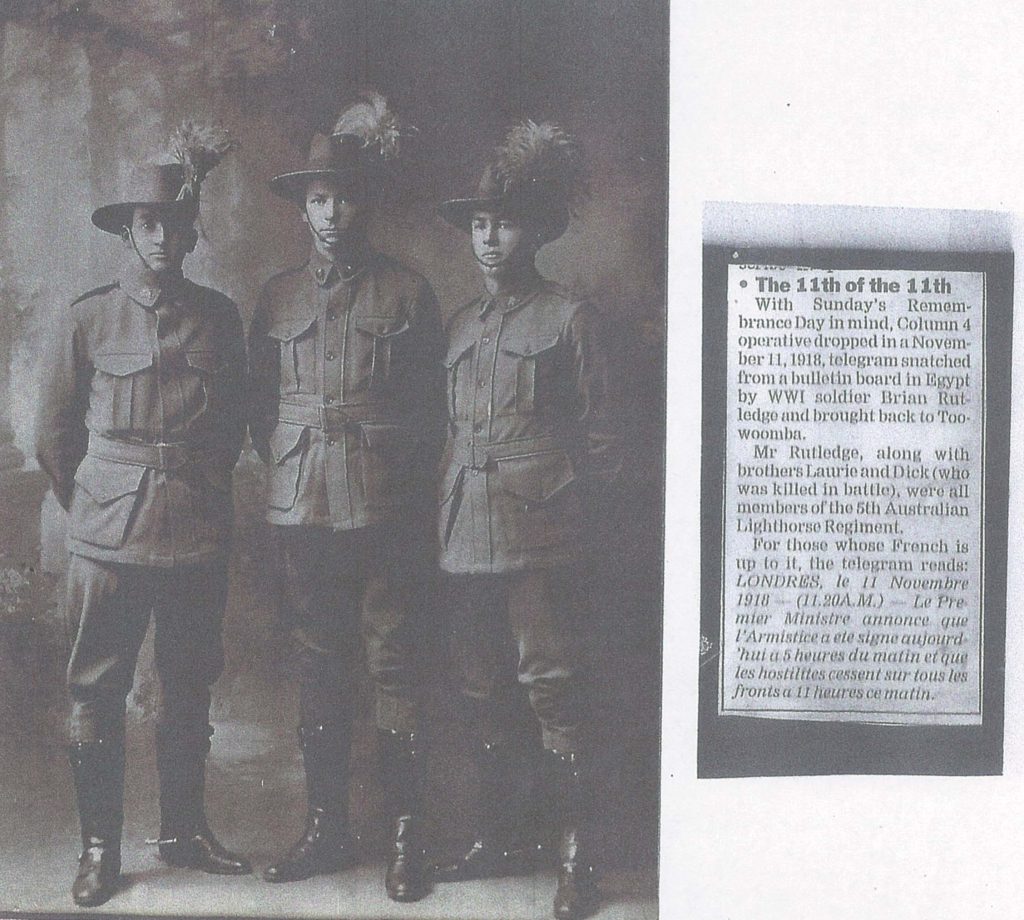
Laurie, Dick and Brian Rutledge courtesy of Dick’s granddaughter Angela Sheridan
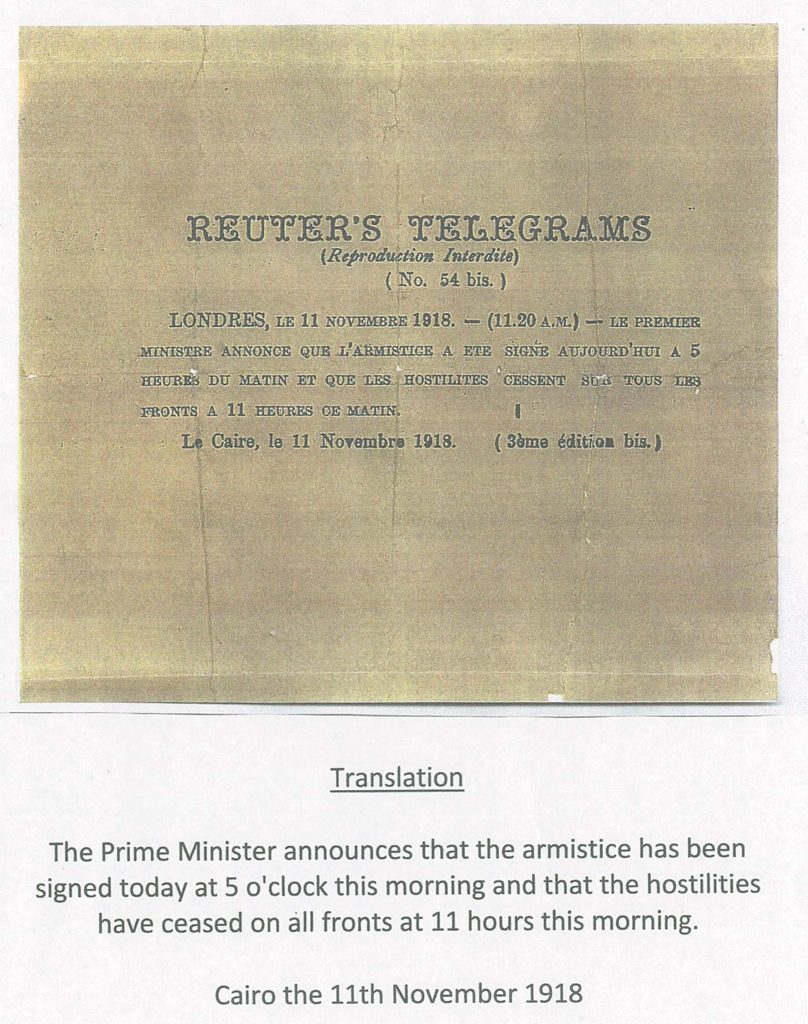
Copy of Armistace Telegram taken by one of the Rutledge Brothers – courtesy of Angela Sheridan
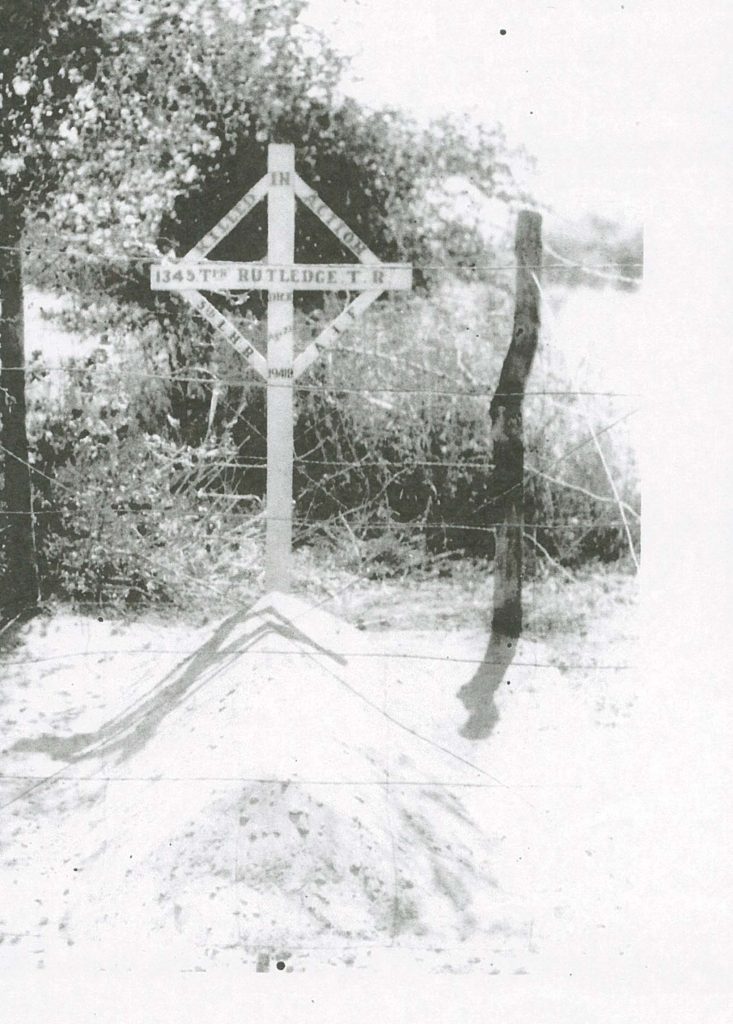
Thomas Richard’s grave site courtesy of Angela Sheridan
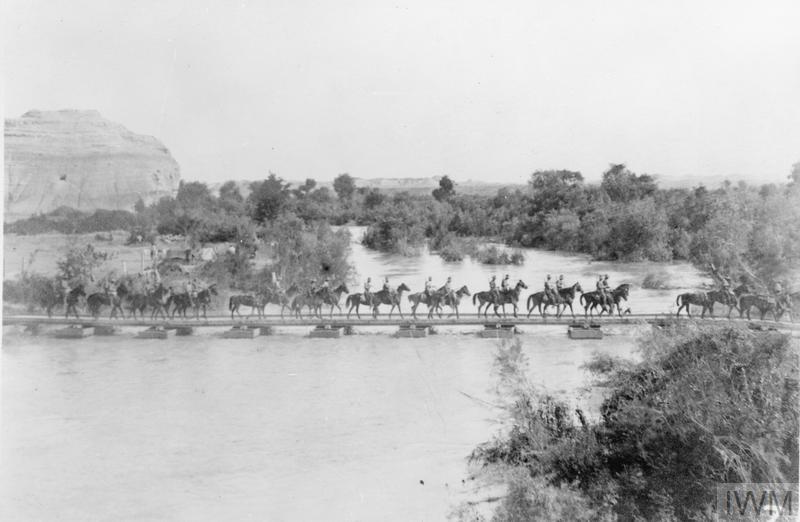
5th LHR crossing the pontoon bridge at Ghoraniyeh Bridgehead in Palestine. Copyright: © IWM. Original Source: https://www.iwm.org.uk/collections/item/object/205082784
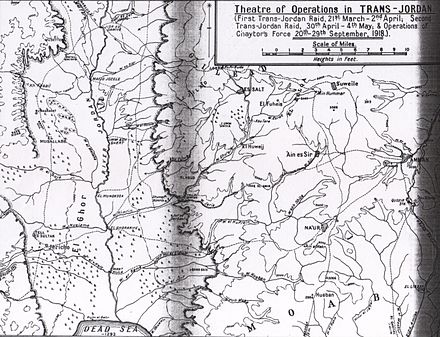
Transjordan theatre of operations 21 March to 2 April; 30 April to 4 May and 20 to 29 September 1918
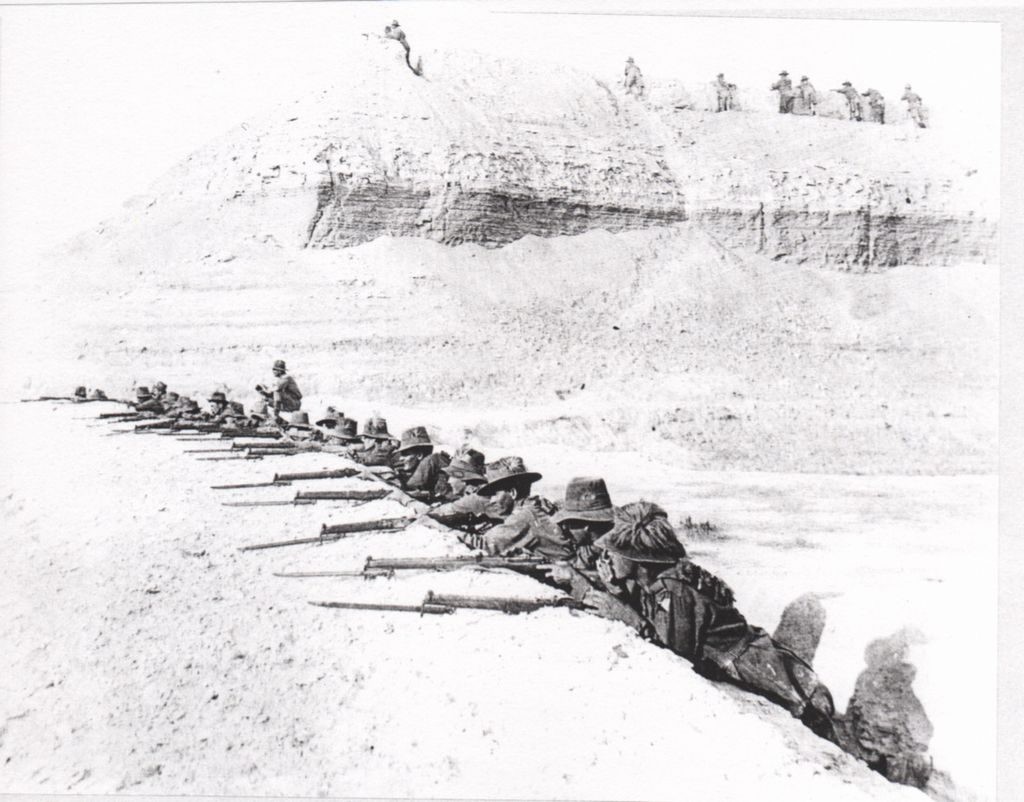
5th LHR in 1918


